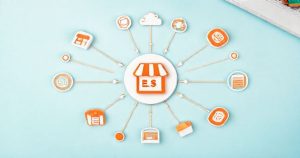In the dynamic world of online retail, maximizing efficiency and streamlining operations are crucial for success, especially for independent creators and small businesses on platforms like Etsy. Etsy integrations offer a powerful solution, enabling sellers to connect their shops with various external tools and services. These connections automate repetitive tasks, synchronize data across platforms, and provide valuable insights, ultimately freeing up valuable time for makers to focus on their craft and grow their brands. Understanding the landscape of available integrations is key to unlocking an Etsy shop’s full potential and ensuring a smoother, more profitable selling journey.
Understanding the Value of Etsy Integrations
Etsy integrations serve as digital bridges, linking your Etsy storefront with essential business applications. For sellers, these integrations are not just conveniences; they are strategic assets that transform manual processes into automated workflows. Imagine eliminating hours spent on data entry, stock updates, or shipping label generation. By automating these critical functions, sellers can significantly reduce the potential for human error, enhance operational accuracy, and dedicate more energy to product development, marketing, and customer engagement, which directly contributes to business expansion and customer satisfaction.
Key Categories of Etsy Integrations for Sellers
Inventory and Order Management Integrations
Efficient inventory and order management are paramount for any thriving e-commerce business. Etsy integrations in this category allow sellers to synchronize their product stock levels across Etsy and any other selling channels they utilize. This prevents frustrating overselling incidents and ensures accurate inventory counts at all times. Furthermore, these tools centralize order processing, providing a single dashboard to view, manage, and track all incoming orders, regardless of their origin, simplifying fulfillment and improving response times for customers.
Shipping and Fulfillment Integrations
Streamlining the shipping process is a major benefit of robust Etsy integrations. These tools automate the creation of shipping labels, often at discounted rates, and automatically update tracking information on Etsy. They can connect directly with major shipping carriers or third-party fulfillment services, making it easier to manage logistics. By reducing manual data entry for shipping details, sellers save considerable time, minimize errors, and ensure a faster, more professional delivery experience for their buyers, enhancing overall customer satisfaction.
Accounting and Financial Management Integrations
Managing finances can be one of the most time-consuming aspects of running an Etsy shop. Accounting integrations directly link your Etsy sales data with popular accounting software platforms. This automation simplifies bookkeeping, tracks income and expenses, and facilitates tax preparation by categorizing transactions accurately. Sellers gain clearer financial insights into their business performance, enabling better decision-making and ensuring compliance with financial regulations without the tedious manual entry typically associated with financial record-keeping.
Marketing and Customer Relationship Management (CRM) Integrations
Building strong customer relationships and executing effective marketing campaigns are vital for long-term success. Marketing and CRM integrations help Etsy sellers collect and manage customer data efficiently. These tools can automate email marketing sequences, segment customer lists for targeted promotions, and track the effectiveness of various marketing initiatives. By integrating these functions, sellers can nurture customer loyalty, encourage repeat purchases, and expand their audience reach through personalized communication strategies, directly impacting sales growth.
Print-on-Demand (POD) and Production Integrations
For Etsy sellers utilizing print-on-demand models or other external production partners, specific integrations are invaluable. These integrations automate the workflow from order placement on Etsy to production and shipping by the supplier. When a customer places an order, the integration automatically sends the design and order details to the POD service or manufacturer. This hands-off approach significantly reduces manual intervention, speeds up fulfillment times, and allows sellers to offer a wider range of products without managing physical inventory.
Choosing the Right Etsy Integration: Essential Considerations
Compatibility and Ease of Use
When selecting Etsy integrations, compatibility with your existing systems and the platform itself is paramount. Look for tools that offer seamless, reliable connections to Etsy, ensuring data flows smoothly without glitches. An intuitive user interface is equally important; a complex integration can negate its benefits by requiring extensive learning curves or troubleshooting. Prioritizing solutions that are easy to set up, navigate, and manage will minimize operational friction and maximize your ability to leverage their features effectively for your Etsy shop.
Scalability and Features
Your Etsy business is likely to evolve, so choosing integrations that can scale with your growth is a strategic decision. Consider whether a tool offers features that meet your current needs while also accommodating future expansion. Some integrations provide basic functionalities, while others offer advanced analytics, multi-channel support, or customizable workflows. Evaluating the breadth and depth of features, alongside their potential for future scalability, ensures your chosen solutions remain relevant and valuable as your Etsy shop grows.
Cost-Benefit Analysis
The financial aspect of Etsy integrations requires careful consideration. While many tools offer free tiers, most powerful solutions come with subscription fees, which can be monthly or annual. Some may also involve transaction-based costs or tiered pricing structures based on usage volume. Conduct a thorough cost-benefit analysis, weighing the investment against the time saved, reduction in errors, and potential increase in sales or efficiency. A well-chosen integration should offer a clear return on investment by optimizing your operations and improving profitability.
Support and Reliability
Even the most robust Etsy integrations can occasionally encounter issues, making reliable customer support a critical factor. Assess the quality and responsiveness of an integration provider’s support team. Look for channels like live chat, email, or a comprehensive knowledge base. Furthermore, the overall reliability and uptime of the integration platform are crucial; any downtime can disrupt your business operations. Choosing a provider known for excellent support and a stable, dependable service ensures continuity and peace of mind for your Etsy shop.
Maximizing Profitability with Integrated Etsy Workflows
The strategic implementation of Etsy integrations directly impacts your shop’s profitability by creating a highly efficient operational ecosystem. By automating routine tasks, sellers can drastically cut down on labor costs and reallocate human resources to higher-value activities like product innovation or marketing. Reduced errors in inventory and shipping lead to fewer returns and higher customer satisfaction, which in turn fosters repeat business. This enhanced efficiency allows for faster order processing, greater sales volume, and ultimately, a healthier bottom line for your Etsy venture.
Platform Approaches: Etsy Integration Landscape
Standalone vs. All-in-One Solutions
When approaching Etsy integrations, sellers often choose between specialized standalone tools and comprehensive all-in-one platforms. Standalone solutions excel in specific functions, offering deep features for inventory, shipping, or accounting. They might be ideal if you have very particular needs in one area. Conversely, all-in-one platforms aim to consolidate multiple functionalities into a single interface, potentially simplifying management. The choice depends on your specific operational complexity, the number of channels you sell on, and your preference for either focused depth or integrated breadth in your tools.
Direct API vs. Third-Party Connectors
Understanding how Etsy integrations connect to the platform is important. Some solutions utilize Etsy’s direct API (Application Programming Interface), which allows for a direct, often highly customized, data exchange. Other integrations rely on third-party connector services that act as intermediaries, translating data between Etsy and another application. Direct API connections often offer greater flexibility for developers but might require more technical expertise. Third-party connectors, while sometimes less customizable, typically provide a user-friendly interface and pre-built connections, making them accessible for most Etsy sellers.
Future-Proofing Your Etsy Business with Strategic Integrations
Adopting a strategic approach to Etsy integrations is not merely about addressing current operational challenges; it’s about future-proofing your business. As the e-commerce landscape evolves, so too will the demands on your Etsy shop. By building a robust, integrated ecosystem, you create a flexible and adaptable foundation that can easily incorporate new tools, respond to market changes, and scale effortlessly. This foresight positions your business for sustained growth, resilience against operational hurdles, and continuous improvement, ensuring long-term success in a competitive online marketplace.
In conclusion, Etsy integrations are indispensable tools for any seller aiming for efficiency, scalability, and sustained growth. By thoughtfully selecting and implementing solutions for inventory, shipping, accounting, marketing, and production, sellers can transform their operational workflows. These powerful connections reduce manual effort, minimize errors, and free up invaluable time, allowing creators to focus on what they do best: creating unique products and delivering exceptional customer experiences. Embracing the power of integration is a clear pathway to unlocking your Etsy shop’s full potential and achieving long-term success.





